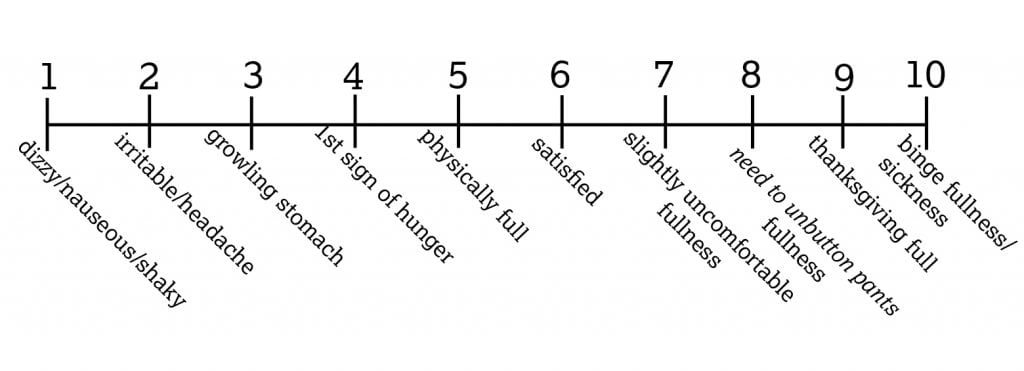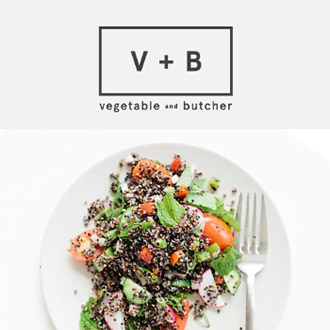Are you even hungry? (How to tell, with 4 strategies)

How hungry?
You’re probably aware that we do a LOT of mindless eating in these parts (America!) – while we watch TV, having lunch at the desk, movie snacks, road snacks…these aren’t the exception, they’re the rule. And it’s not all bad, but eating while distracted does tend to disengage us from listening to our body’s cues for fullness, which means we end up eating more than we need to. Sometimes to the point of discomfort! So here are 4 ways to tune back in to the internal wisdom of your body, and recognize the patterns and triggers you might not even notice are happening while you eat. Try these at the next meal!
- Think about your hunger on a scale of 1-10. This chart from ImmaEatThat nails it – if you start eating when you’re at a 2 or a 3, and stop when you’re at a 6, things will likely feel pretty good. Just check in with yourself before you start eating, and after every 3-4 bites. Stop when you’re satisfied. Yes, this goes against our instincts as survivalists and fill-er-up Americans, but most of us know where our next food is coming from – and it will be in just a few hours!

- Slow down! Your mom may have told you this as a child, as you rudely slurped down your spaghetti, sauce flying (me, all the way) – and she’s right. The next time you eat, notice if you’re loading the next bite of food onto your fork even before you swallow the one you’re chewing! MOST people do this, I’ve observed. It’s learned, and learned early, and a hard habit to break. But if your system takes up to 20 minutes to turn on all the satiety cues, and the average meal lasts 11 minutes – with many breakfasts less than 2 – how will you actually stop when you’re satisfied?
- Drink 16 ounces of water. Just try it – especially if you’ve just eaten and think you should be full, but aren’t. I’ve gone from scrounging for more to food being the last thing I want in minutes, with nothing more than a glass of water. Some experts recommend this, too, although the research on hunger and thirst is confusing and has many confounding variables…luckily, the risk here is low. A glass of water is rarely going to make anything worse, and could help a great deal!
- Eat when you’re hungry. Don’t when you’re not. Seems simple, but we eat so much when we’re not hungry – bored, sad, or happy – that it stands worth asking that one, simple question. Why am I seeking food right now? If you’re bored, find something else to do, or go for a brisk walk. If you’re sad, address that – call a friend, write in a journal, or put on a song that makes you feel better (or worse, sometimes that helps too!).
There’s a lot more you could dig into here, and if you’re curious, I recommend the Joyful Eating Program – there’s a self-study option you can start right away! Created by 3 amazing RD’s who share a passion for enjoying food while creating a plan for healing and nourishment, it’s a gift you can give yourself now and use the rest of your life.









